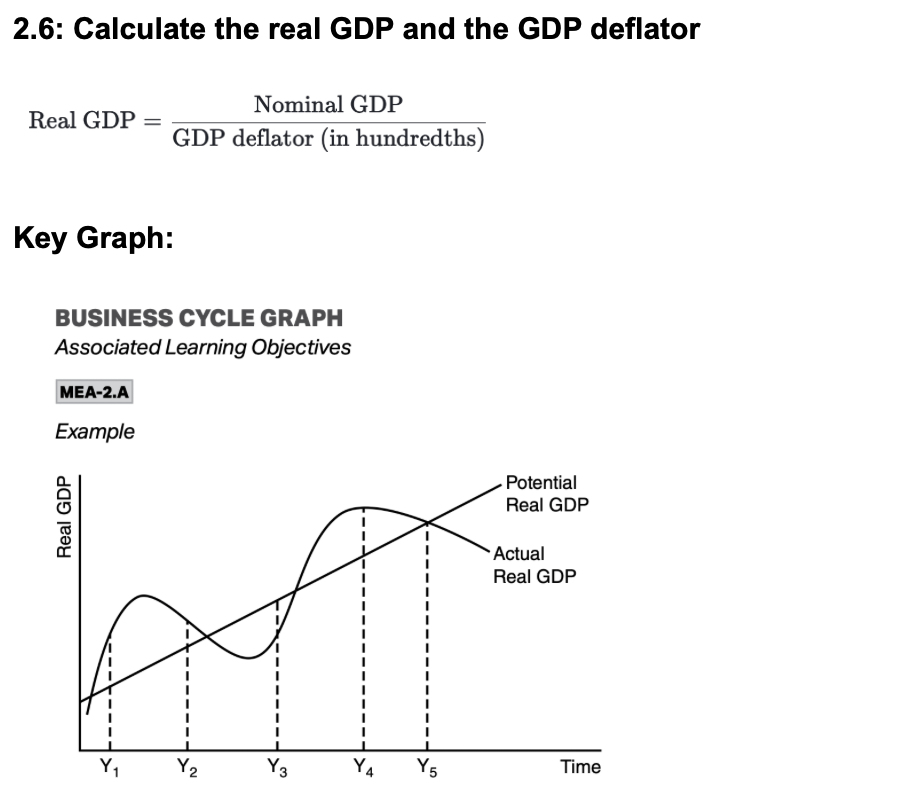business inventories ap macro is an essential topic that dives into how businesses manage their stock and how these decisions ripple across the broader economy. It’s not just about what companies keep on their shelves—it’s about how every item, from raw materials to finished products, plays a role in measuring economic performance and influencing GDP.
You’ll see how the types of inventories—raw materials, work-in-progress, and finished goods—each contribute to a company’s operation and the economy as a whole. Inventory investment is a key driver in the expenditure approach to GDP, signaling economic trends and highlighting shifts in business strategy as the market changes. Understanding why businesses hold inventories, how they adjust through economic cycles, and what inventory data tells policymakers and investors brings clarity to macroeconomic analysis. Plus, real-world examples and case studies show how inventory management has shaped outcomes during both booms and crises.
Business Inventories in AP Macroeconomics
Business inventories play a crucial role in understanding the health and movement of the broader economy. In AP Macroeconomics, inventories are more than just stacks of unsold goods; they are a fundamental part of measuring production, economic growth, and business cycle fluctuations. Tracking how businesses manage and adjust their inventories gives economists insight into economic trends and helps explain short-run variations in GDP.
Definition and Importance of Business Inventories in AP Macro, Business inventories ap macro

In macroeconomics, business inventories refer to the value of all goods that firms have produced but have not yet sold. These inventories can include raw materials, goods still in production, or finished products waiting to be sold. Inventories are a key component of the expenditure approach to calculating Gross Domestic Product (GDP).
Changes in business inventories are counted as part of investment (I) in GDP calculations. An increase in inventories is considered a positive investment, while a decrease suggests that previously produced goods are now being sold, potentially without new production to replace them.
Changes in business inventories represent the difference between what a business produces and what it sells, making them essential for accurately measuring GDP and the pace of economic activity.
Types of Inventories and Their Components
Understanding the types of inventories helps clarify how each stage of production and sales is represented in economic data. Businesses generally categorize their inventories into three main types, each playing a unique part in operations and reporting.
| Type | Description | Examples |
|---|---|---|
| Raw Materials | Unprocessed inputs that will be used in production. | Lumber for furniture, steel for cars |
| Work-in-Progress (WIP) | Goods that are part-way through the production process. | Partially assembled electronics, dough being baked |
| Finished Goods | Completed products ready for sale to customers. | Smartphones in store, packaged cereal boxes |
Raw materials ensure a steady production flow and protect against supply disruptions. Work-in-progress inventories reflect ongoing operations and production efficiency. Finished goods provide a buffer to meet demand and fulfill customer orders promptly.
Inventory Investment and Its Impact on GDP
Inventory investment refers to changes in the stock of unsold goods held by businesses. When firms increase their inventories, it signals that production has outpaced sales, which adds positively to GDP. Conversely, a reduction in inventories means that sales have outpaced current production, subtracting from GDP.
| GDP Component | Includes Inventory Changes? | Example Effect |
|---|---|---|
| Consumption (C) | No | Household purchases, not inventory changes |
| Investment (I) | Yes | Increase in car dealership stock increases investment |
| Government Spending (G) | No | Does not directly include inventories |
| Net Exports (NX) | No | Exports minus imports; inventories not directly included |
Inventory investment acts as a sensitive indicator of real-time shifts in economic demand and production, often foreshadowing changes in the business cycle.
Reasons for Holding Inventories

Businesses maintain inventories for a variety of strategic and operational reasons. Holding the right level of inventories helps firms respond to unexpected changes in demand, manage supply chain risks, and optimize production costs.
- Buffer against demand fluctuations
- Protection from supply chain disruptions
- Bulk purchase advantages and cost savings
- Facilitation of continuous production
- Meeting seasonal or promotional spikes in demand
- Minimizing stockouts and lost sales
Inventory management strategies can vary widely between industries. For example, automobile manufacturers may hold large inventories of components to keep assembly lines running smoothly, while fast fashion retailers prioritize quick turnover and minimal stock to stay ahead of trends and reduce holding costs.
Inventory Adjustments in Economic Cycles
Businesses systematically adjust their inventory levels in response to the broader economic cycle. During expansions, rising demand encourages firms to build up inventories, while in recessions, companies often cut back on new production and allow inventories to dwindle.
- During economic expansion, electronics manufacturers may increase stock of new devices ahead of high demand periods.
- In a recession, a clothing retailer may reduce orders and allow existing inventory to sell down before restocking.
- If demand falls unexpectedly, a car manufacturer may see unplanned accumulation of finished vehicles.
- Conversely, if demand unexpectedly surges, businesses may experience inventory depletion and rush to ramp up production.
Unplanned inventory accumulation typically signals weak demand and can lead to reduced production and layoffs, while unplanned depletion often prompts increased production and hiring as firms restock.
Measuring and Reporting Business Inventories
Government agencies regularly collect and report data on business inventories, providing valuable insights for economic analysis, policy decisions, and business planning. These reports help track trends and anticipate shifts in economic momentum.
| Report Name | Frequency | Reporting Agency |
|---|---|---|
| Manufacturing and Trade Inventories and Sales | Monthly | U.S. Census Bureau |
| Advance Economic Indicators Report | Monthly | U.S. Census Bureau |
| Gross Domestic Product (GDP) Report | Quarterly | Bureau of Economic Analysis (BEA) |
Major inventory data releases can influence financial markets and policy decisions, as sudden shifts may signal changes in business confidence or broader economic health. Policymakers and investors closely monitor these releases to adjust expectations and strategies.
Illustrative Example: Inventory Impact on a Firm’s Output
Consider a scenario where a toy manufacturer faces unexpected demand changes for a new product. Tracking the firm’s inventory and production decisions over several months highlights the dynamic relationship between inventories, sales, and output.
| Month | Beginning Inventory | Units Produced | Units Sold | Ending Inventory |
|---|---|---|---|---|
| January | 1,000 | 2,000 | 1,500 | 1,500 |
| February | 1,500 | 2,000 | 2,200 | 1,300 |
| March | 1,300 | 2,000 | 2,500 | 800 |
| April | 800 | 2,500 | 2,000 | 1,300 |
As demand surged in February and March, inventories fell, prompting the manufacturer to boost production in April. This change ripples through the supply chain, influencing suppliers, retailers, and even employment decisions, as the firm adjusts output to maintain optimal inventory levels.
Common Problems and Solutions in Inventory Management
Effective inventory management is critical for business success and economic stability, but businesses often face several challenges. Addressing these issues has become more efficient with advanced technologies and best practices.
- Inaccurate demand forecasting leading to overstock or stockouts
- Obsolete or expired inventory causing financial losses
- Supply chain disruptions affecting inventory replenishment
- High holding costs reducing profitability
- Poor visibility across multiple inventory locations
Modern solutions include real-time inventory tracking systems, data-driven forecasting, automation, and just-in-time (JIT) inventory strategies. Best practices, such as regular inventory audits and supplier diversification, help businesses stay agile and resilient.
By minimizing excess stock and reducing shortages, effective inventory management not only supports the individual firm but also contributes to macroeconomic stability by smoothing out production and consumption patterns across the economy.
Real-World Applications and Case Studies

Historical and contemporary cases highlight the powerful macroeconomic effects of business inventories. These examples show how inventory adjustments can shape economic outcomes in various sectors.
- During the 2008 financial crisis, widespread inventory liquidations by retailers and manufacturers deepened the downturn.
- The COVID-19 pandemic saw supply chain disruptions and inventory shortages in industries like semiconductors and consumer electronics.
- Automotive companies have shifted to leaner inventory models to reduce costs and improve responsiveness.
- Grocery retailers increased safety stock levels after experiencing empty shelves during sudden demand spikes.
Analyzing these real-world events provides valuable lessons on the importance of flexible inventory strategies, rapid adaptation to market signals, and the risk of both over-accumulation and depletion.
| Sector | Inventory Strategy | Key Outcomes |
|---|---|---|
| Automotive | Just-in-Time, Supplier Diversification | Reduced costs, increased supply chain risk |
| Retail | Safety Stock, Rapid Restocking | Improved service levels, higher carrying costs |
| Technology Manufacturing | Buffer Inventories, Flexible Production | Resilience to demand surges, risk of obsolescence |
Final Summary
In summary, business inventories ap macro offers valuable insights into how stock management decisions link individual companies to the overall economy. From understanding types of inventories to recognizing their impact on GDP and applying lessons from history, mastering this topic equips you to interpret economic signals and make informed decisions. Whether you’re a student, investor, or curious learner, the dynamics of inventory management are more relevant than ever in shaping economic outcomes.
User Queries: Business Inventories Ap Macro
What are business inventories in macroeconomics?
Business inventories in macroeconomics refer to the stock of goods that firms hold at any given time, including raw materials, work-in-progress, and finished products, which are tracked as part of national economic data.
How do changes in inventories affect GDP?
Changes in business inventories are included in the calculation of GDP under the investment component. Increases in inventories raise GDP, while decreases reduce it.
Why might a business intentionally increase its inventory?
Businesses may increase inventory to prepare for anticipated demand, avoid supply chain disruptions, or take advantage of bulk purchasing discounts.
Can inventory data predict economic recessions or expansions?
Inventory data can be an early indicator of economic trends, as rapid accumulation or depletion often signals changes in consumer demand or business confidence.
What is the difference between planned and unplanned inventory changes?
Planned inventory changes are intentional adjustments made by businesses, while unplanned changes occur when actual sales differ from expectations, leading to unexpected surplus or shortages.
